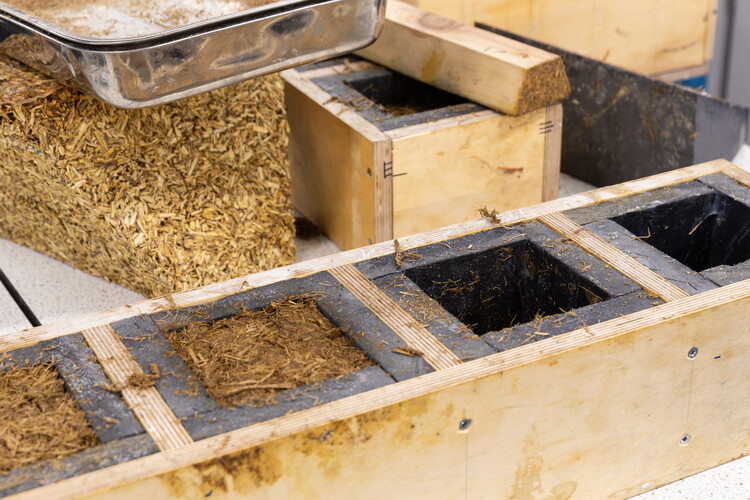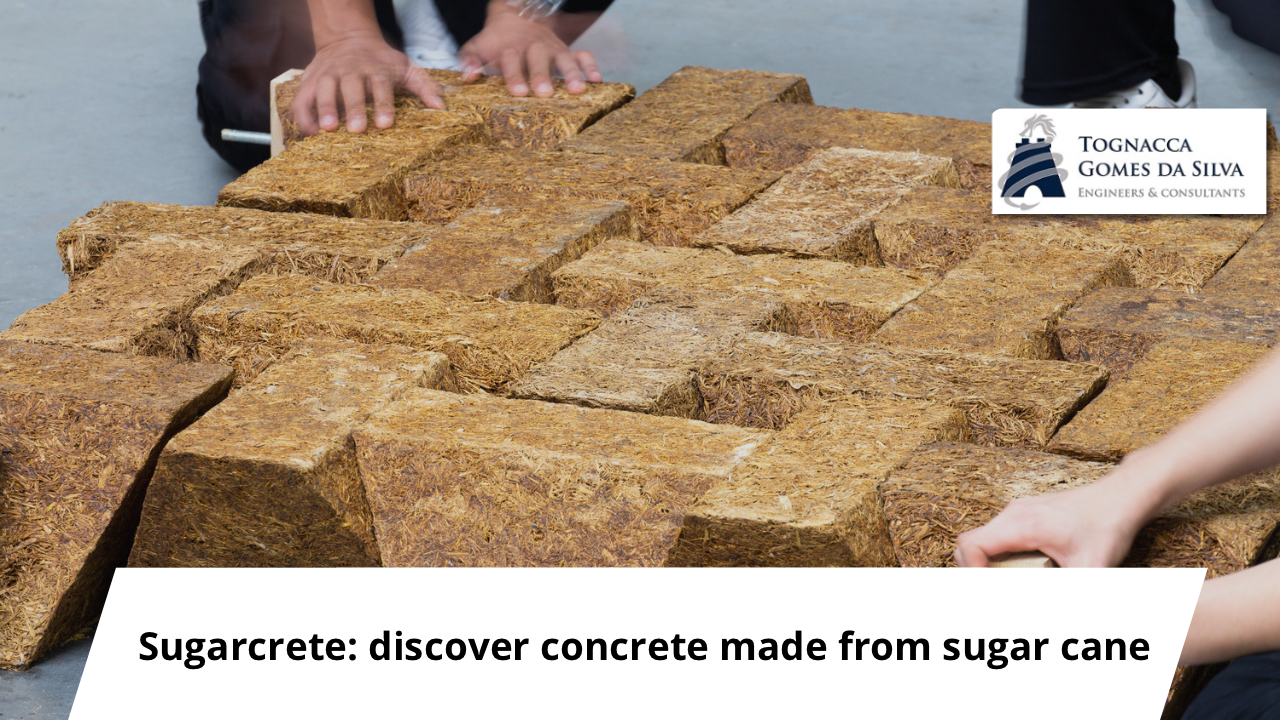Researchers at the University of East London (UEL), in the United Kingdom, in partnership with Grimshaw architects and sugar manufacturer Tate & Lyle Sugar have developed an innovative construction material called Sugarcrete – a concrete made from sugar cane. The product, created by combining bagasse with mineral binders, is lighter than traditional brick and has a 15% to 20% carbon footprint.
As the researchers highlight, the main objective of the project is to explore sustainable solutions to use biological waste from sugar cane while reducing carbon emissions in the construction industry. “The main innovation of Sugarcrete™ is to challenge the established misconception that biomaterials have low structural performance and create a material with sufficient structural strength to be self-supporting,” said Armor Gutierrez Rivas, Senior Professor of Architecture, to the Arch Daily website.
It would be possible, for example, to completely replace the brick industry by using a fraction of 30% of global bagasse production. This would result in savings of 1.08 billion tons of CO2, or 3% of global carbon dioxide production.
The study states that sugar cane is up to 50 times more efficient than forestry in converting CO2 into biomass. The material also has good structural characteristics, is insulating, fire resistant, easy to use with unskilled labor and has a simplified supply chain due to its simple composition.
Process of manufacturing concrete made from sugar cane

As Bamdad Ayati, research fellow at the Sustainability Research Institute at Uel, explains, the manufacture of Sugarcrete is not complicated and resembles traditional concrete blocks. “It involves mixing, casting and drying/curing materials. The alloying components are mineral-based and widely available in locations with an established sugar industry. Like other construction materials, large-scale production challenges are associated with variability in the raw raw material in terms of moisture content, particle size, unwanted impurities, etc,” he explains.
The system created by the researchers involves an interlocking system that uses parts that connect and allow the construction of large structures using small, discrete components, without the need for mortar.
“The ethics of material innovation to address the climate crisis must design the supply chain as well as the performance specification. Carbon is at the top of the list; We must also mention toxicity in relation to health and safety in construction processes. Using bagasse and other fast-growing biologicals in combination with inert mineral binders not only for insulation layers but also for structures eliminates chemically malignant and fuel-based product lines from construction sites. This directly responds to the safety priorities of the Construction Safety Act during the manufacturing, construction, demolition, reuse and disposal sequences,” assures Alan Chandler.
The innovative product was nominated for the Earthshot 2023 award, known as the biggest global award for the environment.
(Source: Katiuscia Mizokami, Digital Agro)



